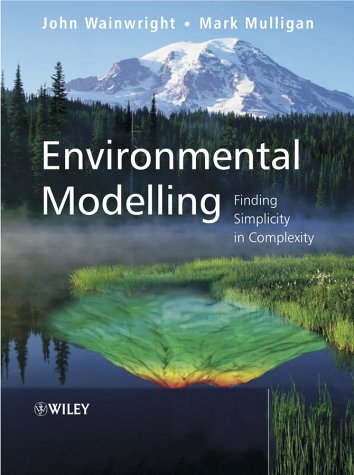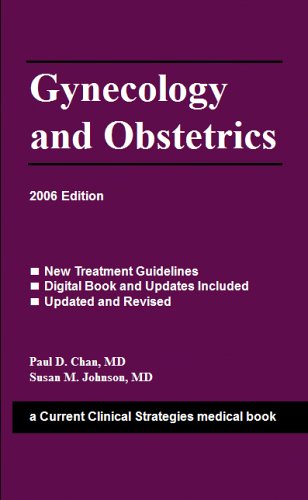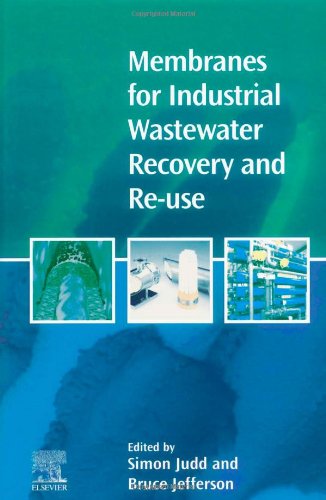John Wainwright, Mark Mulligan0471496189, 9780471496182, 9780470091548, 0471496170, 9780471496175
Environmental Modelling: Finding Simplicity in Complexity is divided into four main sections. The first section provides an overview of methods and approaches to modelling. The following sections look at the state of the art in modelling different processes, the tools used and the applications addressed. It concludes with a look into the future of simulation modelling and some of the major developments in the field that are currently ongoing, including the use of GIS.
This book: Focuses on simplifying complex environmental systems. Reviews current software, tools and techniques for modelling. Has an associated website containing colour images, links to WWW resources and chapter support pages, including data sets relating to case studies, exercises and model animations. Gives practical examples from a wide variety of disciplines, e.g., climatology, ecology, hydrology, geomorphology and engineering.
This book is suitable for 2nd/3rd year undergraduates taking courses in Environmental Modelling in Departments of Geography, Environmental Science, Civil Engineering and Biology. It is also designed to appeal to professionals interested in the environmental sciences, including environmental consultants, government employees, civil engineers, geographers, ecologists, meteorologists, geochemists, soil scientist, environmental managers, social scientists, archaeologists, agronomists, engineers and applied mathematicians, as well as those with interests in spatial modelling and GIS.
Table of contents :
Environmental Modelling……Page 3
Contents……Page 9
List of contributors……Page 19
Preface……Page 23
3 Why simplicity and complexity?……Page 25
4 How to use this book……Page 26
References……Page 28
Part I Modelling and Model Building……Page 29
1.1.2 A model for environmental research……Page 31
1.1.4 Researching environmental systems……Page 32
1.2 Models with a purpose (the purpose of modelling)……Page 34
1.2.1 Models with a poorly defined purpose……Page 36
1.3 Types of model……Page 37
1.4.2 Assumptions……Page 39
1.4.3 Setting the boundaries……Page 40
1.4.5 Model building……Page 41
1.4.6 Modelling in graphical model-building tools: using SIMILE……Page 42
1.4.7 Modelling in spreadsheets: using Excel……Page 44
1.4.8 Modelling in high-level modelling languages: using PCRASTER……Page 46
1.4.9 Hints and warnings for model building……Page 52
1.5.2 Formalizing environmental systems……Page 53
1.5.3 Analytical models……Page 58
1.5.4 Algorithm appropriateness……Page 59
1.5.5 Simple iterative methods……Page 62
1.5.6 More versatile solution techniques……Page 64
1.6.1 Chickens, eggs, models and parameters?……Page 75
1.6.2 Defining the sampling strategy……Page 76
1.6.4 Calibration and its limitations……Page 78
1.6.5 Testing models……Page 79
1.6.6 Measurements of model goodness-of-fit……Page 80
1.7 Sensitivity analysis and its role……Page 82
1.8.1 Error……Page 83
1.8.3 From error to uncertainty……Page 90
1.9 Conclusion……Page 91
References……Page 92
Part II The State of the Art in Environmental Modelling……Page 99
2.1 The complexity……Page 101
2.2.1 Models of the atmosphere and oceans……Page 103
2.2.2 Models of the carbon cycle……Page 105
2.2.3 Models of atmospheric chemistry and aerosols……Page 107
2.2.5 The roles of simple and complex climate-system models……Page 108
2.3 The research frontier……Page 109
2.4 Case study……Page 110
References……Page 113
3.2.1 Plane simple: overland flow on Hillslope 1……Page 117
3.2.2 Getting a head: soil-water/ground-water flow in Hillslope 2……Page 119
3.3.1 Little or large?: Complexity and scale……Page 121
3.3.2 A fitting end: the physical veracity of models……Page 123
3.3.3 Perceptual models and reality: ‘Of course, it’s those bloody macropores again!’……Page 124
3.4 Eenie, meenie, minie, mo: choosing models and identifying processes……Page 126
References……Page 127
4.1 Introduction: connectance in hydrology……Page 131
4.2.2 Representing the flow of water in landscapes……Page 132
4.2.4 A brief review of catchment hydrological modelling……Page 137
4.2.5 Physically based models……Page 138
4.2.6 Conceptual and empirical models……Page 139
4.2.7 Recent developments……Page 140
4.3.3 Simplifying process complexity……Page 141
4.3.4 Concluding remarks……Page 142
References……Page 143
5.2.1 Form and process complexity……Page 147
5.3 Finding the simplicity……Page 150
5.3.1 Mathematical approaches……Page 151
5.3.2 Numerical modelling of fluvial interactions……Page 153
5.3.3 Physical modelling of fluvial processes and interactions……Page 155
5.4 Case study 1: modelling an extreme storm event……Page 159
5.5 Case study 2: holistic modelling of the fluvial system……Page 160
References……Page 162
6.1 The complexity……Page 167
6.2.1 A question of scale……Page 168
6.2.2 What are the alternatives for modelling plant function?……Page 169
6.2.3 Applying a mechanistic approach……Page 170
6.4 Case study……Page 172
References……Page 176
7.1 The complexity: introduction……Page 181
7.2.2 Three approaches to spatially explicit ecological modelling……Page 182
7.3 The research frontier: marrying theory and practice……Page 186
7.4.1 The problem……Page 187
7.4.3 The question……Page 188
7.5 Conclusion……Page 189
References……Page 191
8.1.1 Fire……Page 195
8.1.3 Fire and grazing interactions……Page 196
8.2 Model simplification: simulation of plant growth under grazing and after fire……Page 197
8.3 New developments in ecosystem modelling……Page 200
8.4.2 A model exercise……Page 201
References……Page 207
9.1 The complexity……Page 211
9.2.1 Parameter uncertainty……Page 213
9.2.3 Do simple models predict erosion any better than more complex ones?……Page 214
9.3 Finding simplicity……Page 215
9.5 Case study……Page 216
References……Page 219
10.1 The complexity……Page 221
10.2.1 One-dimensional models……Page 222
10.2.2 Two-dimensional models……Page 223
10.2.3 Three-dimensional models……Page 224
10.2.5 Modelling external triggers……Page 225
10.3 The research frontier……Page 226
10.4.2 The modelling approach……Page 227
10.4.3 Validation……Page 228
10.4.4 Results……Page 229
References……Page 231
11.1 Introduction to models……Page 235
11.2 Dare to simplify……Page 236
11.3 Sorting……Page 238
11.5 The process……Page 240
11.6 Biogeochemical models……Page 241
11.7 Conclusion……Page 245
References……Page 246
12.1 Introduction……Page 249
12.2 The human mind……Page 250
12.3 Modelling populations……Page 252
12.4.1 Agent-based modelling……Page 253
12.4.2 Economics models……Page 258
12.4.3 Game theory……Page 259
12.4.4 Scenario-based approaches……Page 261
12.5 Never mind the quantities, feel the breadth……Page 263
12.6 Perspectives……Page 265
References……Page 266
13.1.2 Causes of land-use changes……Page 269
13.2.1 Empirical-statistical models……Page 270
13.2.3 Optimization models……Page 271
13.2.4 Dynamic (process-based) simulation models……Page 272
13.3 The research frontier……Page 273
13.3.3 Integrating temporal heterogeneity……Page 274
13.4.2 Model structure……Page 275
References……Page 277
Part III Models for Management……Page 279
14.1 Introduction……Page 281
14.3 Decision-support systems……Page 282
14.4.1 Knowledge acquisition and systems analysis……Page 283
14.4.2 Modelling and integration of models……Page 284
14.4.3 Technical integration……Page 285
14.5.1 The economic submodel……Page 286
14.5.2 Landscape……Page 288
14.5.3 The ecological subsystem……Page 289
14.6 The toolbase……Page 290
14.7 The database……Page 291
14.8 The user interface……Page 292
14.9 Conclusion……Page 293
Acknowledgements……Page 294
References……Page 295
15.2 Why are DSS needed?……Page 297
15.3 Design of a decision-support system……Page 298
References……Page 300
16.1 The problem……Page 301
16.2 The approaches……Page 303
16.3 The contributions of modelling……Page 305
16.3.1 Potential changes in rainfall erosivity in the USA during the twenty-first century……Page 306
16.3.2 Effects of precipitation intensity changes versus number of days of rainfall……Page 308
16.4 Lessons and implications……Page 311
References……Page 312
17.1 The issue……Page 315
17.2.3 The knowledge-based approach……Page 316
17.3.1 Models of the forest system……Page 317
17.3.2 Models of human responses and interactions……Page 318
17.3.3 Integrating techniques……Page 319
17.4.3 People need to understand trade-offs……Page 321
References……Page 322
18.1 Introduction……Page 327
18.2 Basic propositions……Page 328
18.3 Complex interactions……Page 330
18.3.1 Spatial variability……Page 333
18.3.2 Temporal variability……Page 334
18.4 Climate gradient and climate change……Page 335
18.6 Plants……Page 337
References……Page 338
Part IV Current and Future Developments……Page 341
19.1 Introduction……Page 343
19.2.2 Scaling……Page 344
19.4.1 Change of parameters with scale……Page 346
19.4.2 Methods of scaling parameters……Page 347
19.5.1 Incompatibilities between scales……Page 348
19.5.2 Methods for upscaling environmental models……Page 349
19.6.1 Sensitivity of both topographic slope and vegetation cover to erosion……Page 352
19.6.4 Upscaled soil-erosion models……Page 353
References……Page 356
20.2.1 Overview……Page 359
20.2.3 Grid structure……Page 360
20.2.5 The turbulence-closure problem and turbulence models……Page 362
20.3.1 Hydraulic applications……Page 363
20.3.2 Atmospheric applications……Page 366
20.4 Conclusion……Page 369
References……Page 371
21.1.1 The ever-decreasing simplicity of models?……Page 373
21.2.1 Deterministic chaos and fractals……Page 375
21.2.3 Attributes of self-organizing systems……Page 376
21.2.4 The counter-intuitive universality of self-organization……Page 378
21.3 Cellular automaton models……Page 379
21.3.4 Modelling self-organization: the problem of context and boundaries……Page 380
21.3.6 Geomorphological applications of CA models……Page 381
21.4.1 The RillGrow 1 model……Page 382
21.4.2 The RillGrow 2 model……Page 383
21.5 Conclusion……Page 387
Acknowledgements……Page 389
Notes……Page 390
References……Page 391
22.1 Introduction……Page 395
22.2 Philosophies of modelling……Page 396
22.3.3 Conditional validation……Page 397
22.4 Data-based mechanistic (DBM) modelling……Page 398
22.6.1 A linear example: modelling solute transport……Page 400
22.6.2 A nonlinear example: rainfall-flow modelling……Page 404
22.7 The evaluation of large deterministic simulation models……Page 407
22.8 Conclusion……Page 409
References……Page 410
23.1.1 Explanation……Page 413
23.1.2 Qualitative issues……Page 415
23.1.4 How should we model?……Page 416
23.1.7 Modelling in an integrated methodology……Page 417
23.1.8 Data issues……Page 418
23.2 Research directions……Page 419
References……Page 420
Index……Page 421







Reviews
There are no reviews yet.